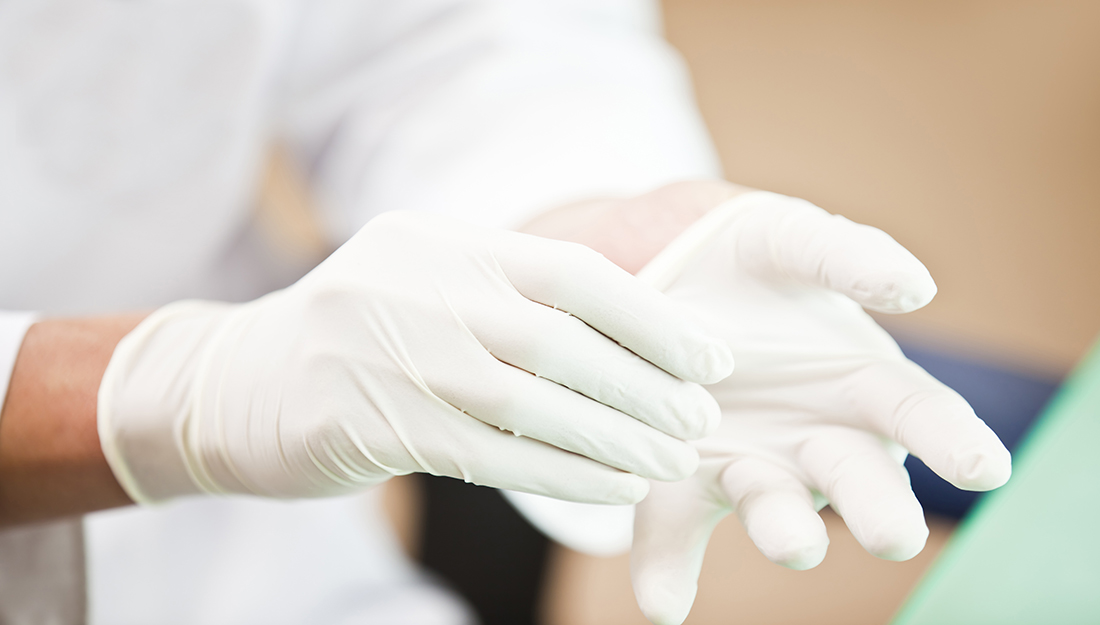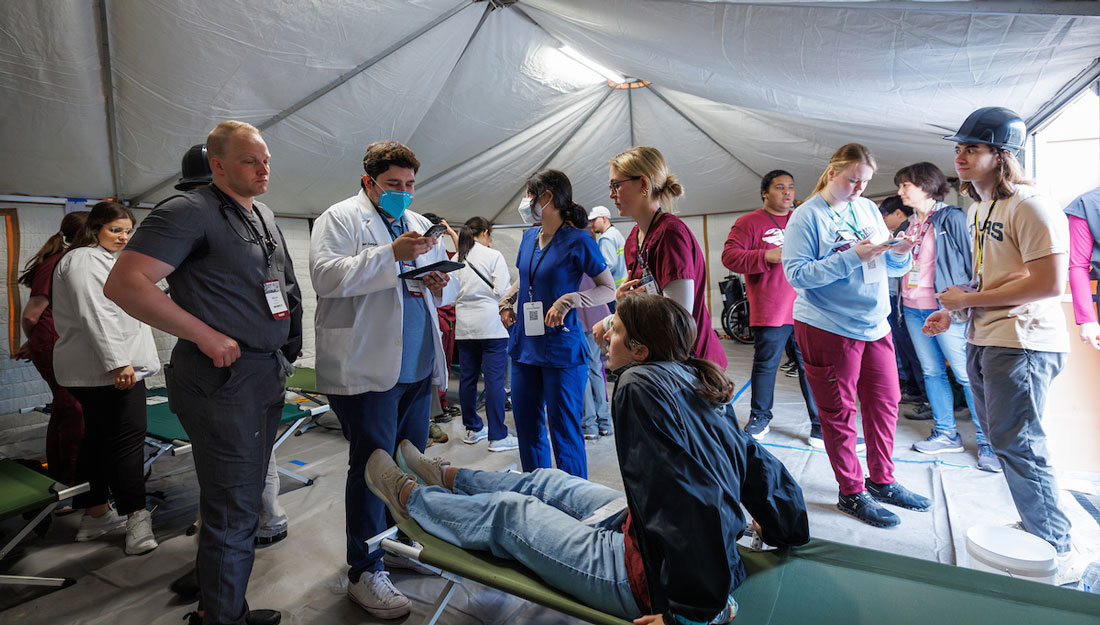- Jennifer Fuentes
- Community, Dentistry, Research, Show on VR homepage
Texas dental schools team up on $1.6M dentistry workforce grant
All of Texas' dental schools work together on a single grant with a common goal

Doctor putting on examination gloves
Dental health professional shortage areas are not one-size-fits-all. They can occur in counties with booming or sparse populations, and the designation can apply to specific groups of people or even health care facilities themselves.
What the 323 dental HPSAs in Texas — the most in any state other than California — do have in common is a lack of primary care, dental and mental health providers. A $1.6 million Health Resources and Services Administration workforce grant awarded to Texas A&M College of Dentistry seeks to soften that burden through adding 25 percent more practitioners to these areas by luring new dentists to work in the public health setting and thus improve the dentistry workforce in these areas. The college’s efforts are in tandem with UT Health San Antonio, School of Dentistry and the University of Texas School of Dentistry at Houston, also partnering with the Texas Department of State Health Services.
It’s a collaboration you don’t see every day: all of a state’s dental schools working together on a single grant with one goal.
“I have not seen something on this level before,” says Dr. Peggy Timothé, assistant professor in public health sciences at the College of Dentistry and a principal investigator on the project. “This is the first time I know of that three dental schools went in together on an application.”
While the College of Dentistry is the lead agency on the grant, all three schools receive an equal portion of funds, and each will feature a unique structure for implementing the program on its campus.
“Even in the same state, each dental school has unique needs and characteristics,” says Dr. Ana Neumann, director of dental public health at the Houston dental school and a co-principal investigator. “During the writing process, each institution had the flexibility to address their needs and contribute with their strengths, so we will learn from each other and grow together.”
The four-year funding term began Sept. 1, and as the project takes shape here in Dallas, students can expect several exciting opportunities. Starting in spring 2019, D3s may apply to participate in the program, which includes scholarship incentives for their final year of school if they commit to work in a dental shortage area for one year following graduation.
“Dental school is so expensive, and working in a community clinic does not pay what private practice does, so the scholarship is going to offset that,” says Timothé.
Additional education, experience and support are a given so that participants can better tackle some of the challenges that patients in the public health setting may face. Incoming dental students also can expect to have more exposure to dental public health earlier on, at a time when they start to form opinions about post-graduation advanced training.
“Part of the idea is to expose them to community dentistry at an earlier stage in dental school,” says Dr. Shirley Lewis-Miranda, clinical assistant professor in public health and one of Texas A&M College of Dentistry’s co-investigators on the grant, along with Paul Hoffmann and Dr. Anneta Bitouni. “So that way, they know when they graduate whether this is for them and that it’s an option.
“A big thing is to have access to care. Around the dental schools we are all covered with a lot of dentists, but the goal is to have our students go out into communities that have no dentists.”
Potential for networking with peers at the other Texas dental schools is an added bonus for those who commit to the program, thanks to plans at the San Antonio dental college. Magda de la Torre, clinical assistant professor at the school and a co-principal investigator, says that in addition to tuition scholarships and expanded professional development opportunities for their own students, they plan to host a conference during the last year of the grant for participants from all of the schools.
It’s in keeping with the team approach found throughout the project.
“By having the three dental schools that are spread in three different geographical regions, we can actually accomplish more and cover more in the state of Texas than if just one school had the grant,” says de la Torre.
This article originally appeared in Dentistry Insider.
Media contact: media@tamu.edu


